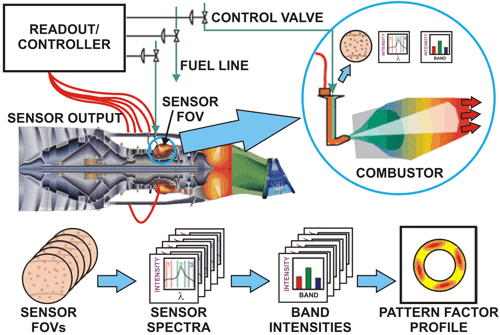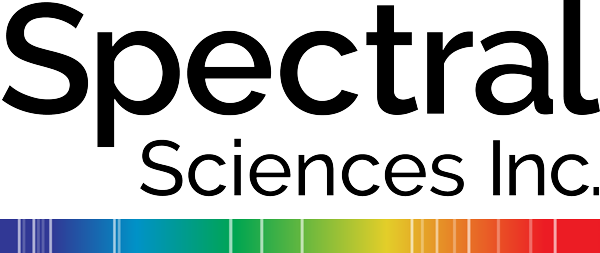Innovative Combustion Sensor System may Extend Aircraft Maintenance Interval and Turbine Lifetime
Spectral Sciences Inc. (SSI) has applied SBIR-developed Structured Emission Tomography (SET) technology to produce a sensor system and fuel control strategy that extends turbine engine lifetime and reduces total cost of ownership of aero-turbine systems. This work has direct application to the Joint Strike Fighter and other jet aircraft, as well as gas turbines for energy production.
During service, turbine blades in military and commercial aircraft continually endure rapid and repeated variations of up to several hundred degrees in the temperature of the air around them. This non-uniformity, called temperature pattern, has been related to increased maintenance costs and reduced service lifetime issues in military aircraft. It is thought that changes due to the temperature pattern cause non-uniform thermal expansion and contraction stresses within a turbine blade that degrades its integrity over time. Because temperature patterns can differ significantly among nominally-identical engines, an active control strategy is envisioned to smooth out the temperature pattern.
SSI has shown that trimming fuel flow at a nozzle has a direct effect on the temperature of the flow entering the turbine directly downstream. The control approach integrates an optical sensor with the aircraft fuel nozzle to provide a control signal that allows a valved fuel system to redistribute fuel and reduce the temperature differences among nozzle-sectors.
The sensor technology and control authority has been demonstrated in laboratory and partial-engine test stands, and has been further developed through a $3M follow-on Air Force BAA with prime Parker Hannefin, a manufacturer of engines, valves, controls, and fuel injectors, Georgia Tech, and other industry partners.
For more information about our combustion sensor research and development, contact Dr. Jason Cline, Group Leader for the Instrumentation Laboratory at Spectral Sciences, Inc.

